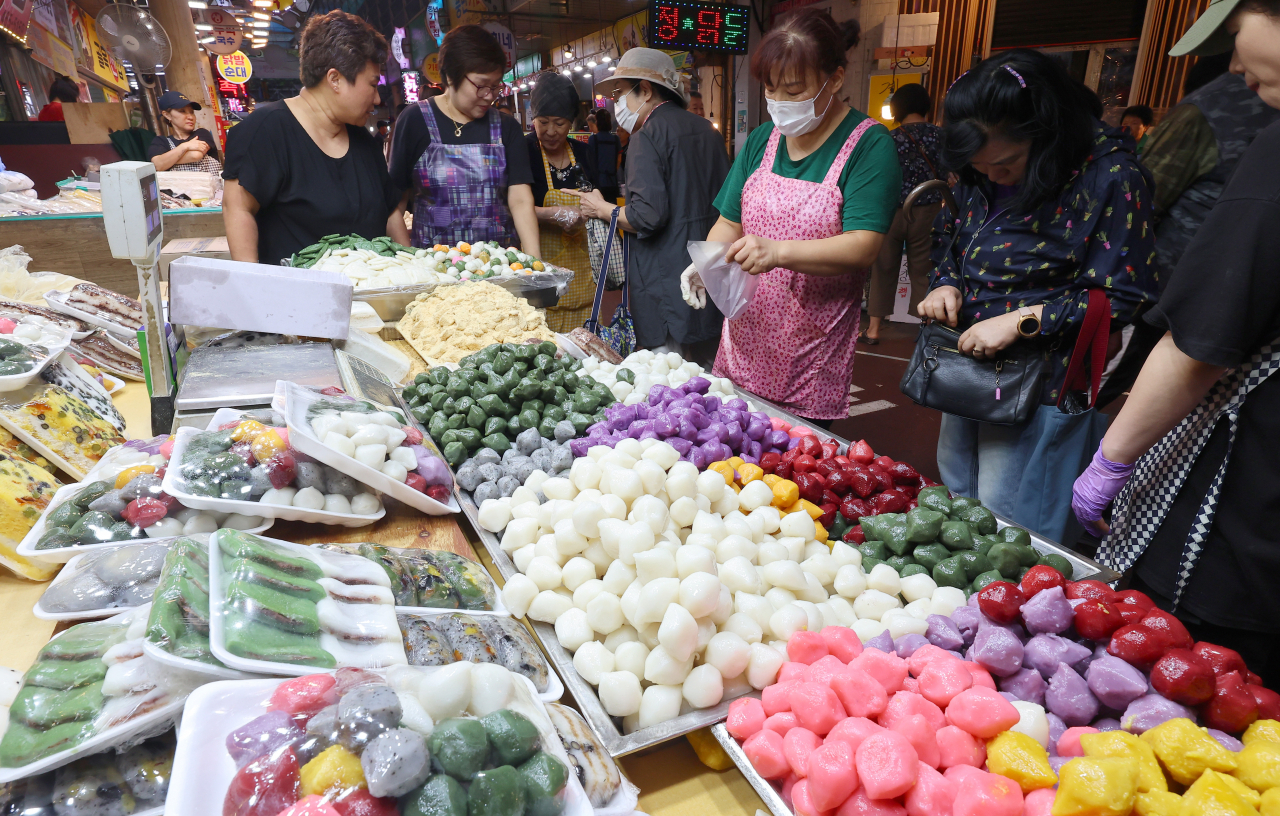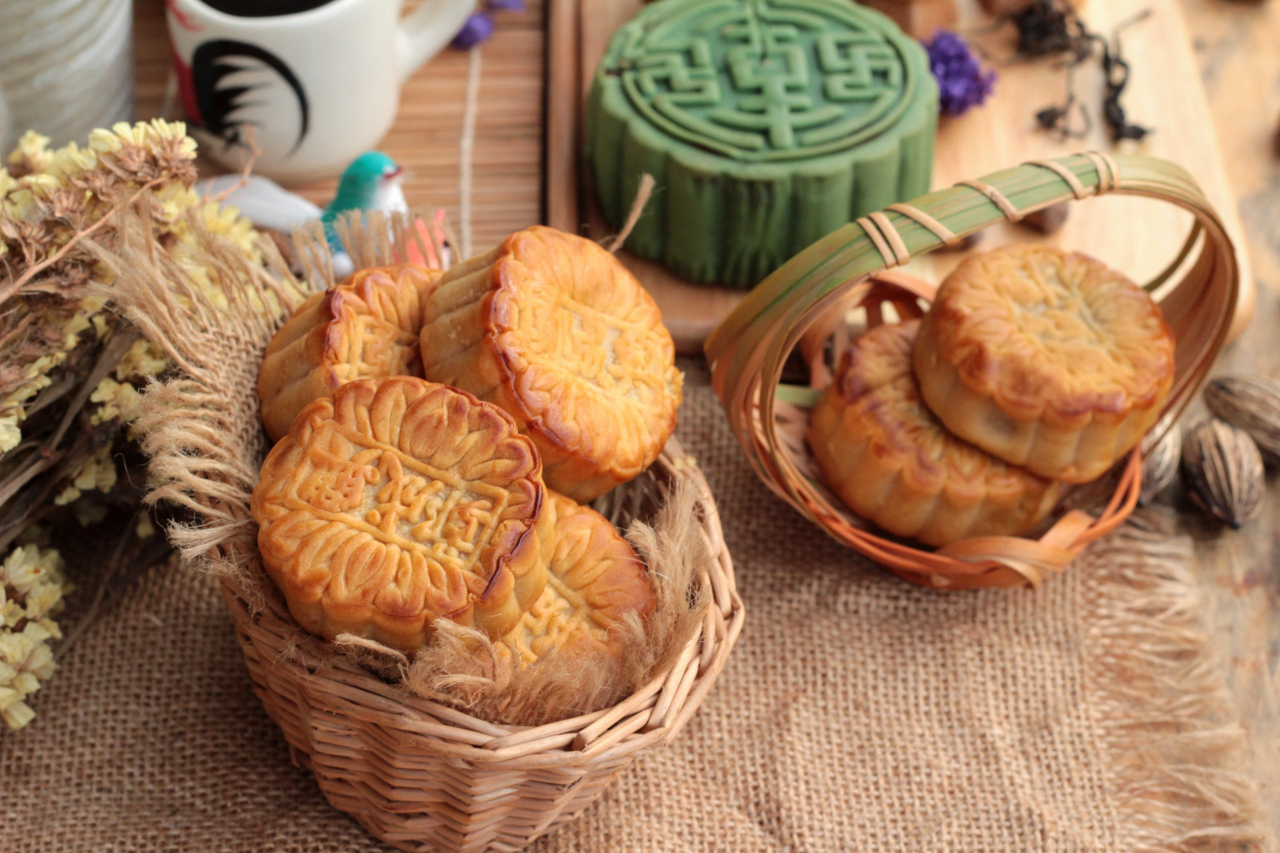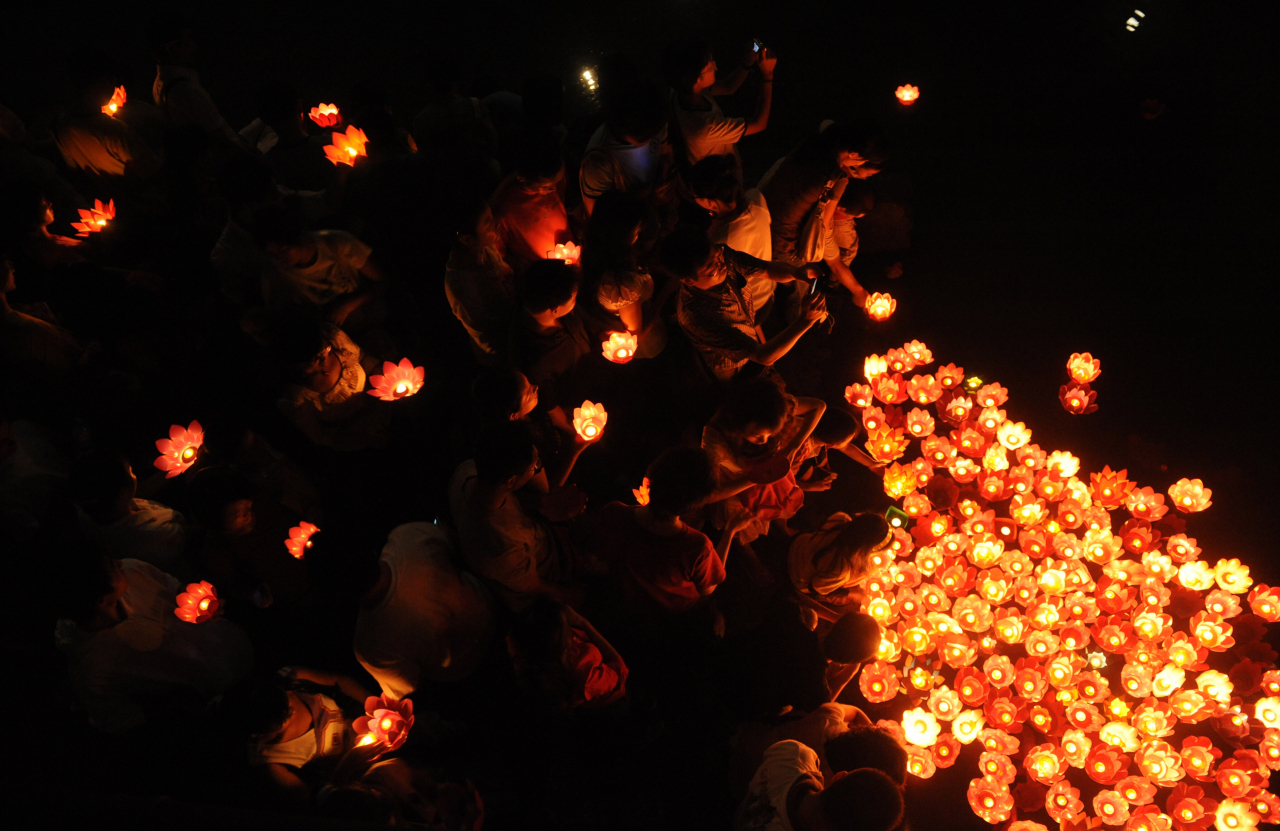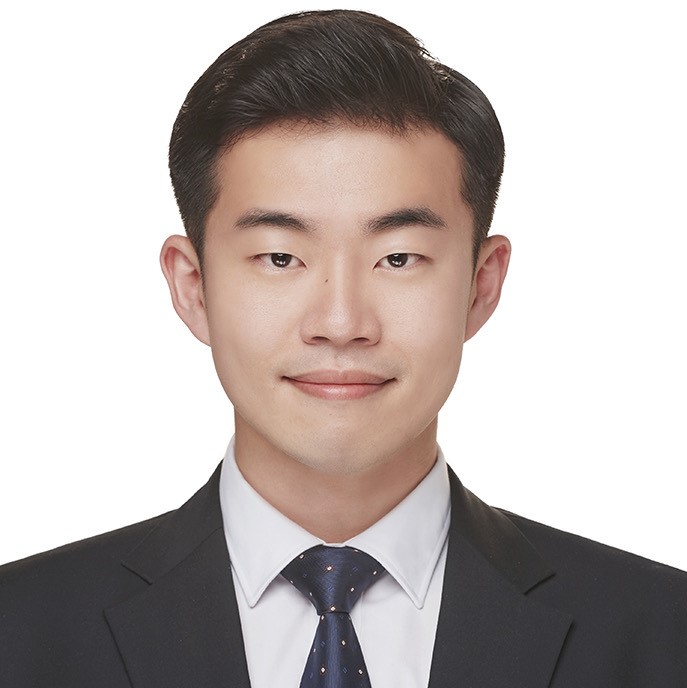Same day, different holiday: Mid-autumn festivals across East Asia
By Lim Jae-seongPublished : Sept. 29, 2023 - 16:01

People staring at screens to book tickets to home, jammed highways and families enjoying festive foods are typical scenes associated with Chuseok, one of South Korea's biggest traditional holidays.
Along with Seollal, Chuseok is one of two holidays that span three consecutive days.
The origins of Chuseok are unclear, but similar holidays are celebrated across East Asia on the same date -- Aug. 15 on the lunar calendar -- though some have come to mark Aug. 15 on the solar calendar as well.
South Korea
Koreans use the day to celebrate the harvest and pay gratitude to their ancestors through the family ritual ceremony, “charye,” and visiting their ancestors' graves to pay respect to them, called “seongmyo.”
The holiday, which is found as far back as the historical records of the Silla Kingdom (57 B.C.-A.D. 935), was first designated a public holiday in 1949 after liberation from Japanese colonial rule in 1945, and has been a three-day holiday since 1989.
Traditional Chuseok scenes continue today, bringing feast tables full of freshly harvested foods to family Chuseok gatherings.
Among the many foods typically served, moon-shaped songpyeon made from newly harvested rice are an essential part of Chuseok festivities.
Charye and seongmyo are also practiced by many Korean families, although many now opt for family trips instead of carrying out these traditions.
North Korea
As it shares history and culture with South Korea until the mid-20th century, North today has Chuseok traditions very similar to South Korea's.
North Korea’s state media Rodong Sinmun writes, “Celebrating Chuseok, people have visited ancestors’ tombs and conducted ritual ceremonies with foods from the year’s harvest … as a reflection of fine customs,” in an Aug. 31 article on the holidays to come in September.
“Songpyeon made from fresh grains is a unique Chuseok dish of Koreans,” it added.
However, North Korea banned celebrating Chuseok between 1967 and 1971, citing its incompatibility with “socialist lifestyles.”
North Korea has recognized Chuseok as a holiday since 1988, but allows only one day off, meaning that the cross-country family migrations associated with Chuseok in South Korea are a rare sight in the North.
As a uniquely North Korean custom, many people also visit the national cemetery and pay respect to fallen soldiers and Communist partisans in North Korea.

China
The Mid-Autumn Festival or Mooncake Festival is a Chinese traditional holiday that falls on Aug. 15 of the lunar calendar, and has been celebrated since the Tang era (618–907).
The holiday is enjoyed in mainland China, Hong Kong, Taiwan, Singapore and by Chinese across the world.
The Mooncake Festival, another name for the holiday, comes from mooncakes, a round dessert with sweet fillings.
The dessert’s round shape resembles the full moon seen on the night of the Mid-Autumn Festival, and people exchange the cakes as a popular gift. Some of them can cost more than $100.
China has designated the Mid-Autumn Festival as a one-day public holiday since 2008. Many other countries with Chinese communities do not recognize it officially, but people still visit their families, look at the moon and enjoy lanterns and fireworks together.

Japan
While most of Japan's traditional holidays are according to the solar calendar, the Japanese continue the custom of “Tsukimi” -- looking at the full moon on Aug. 15 of the lunar calendar -- though the day is not a public holiday.
Legend says the practice of moon watching common in China’s Tang era spread in Japan during the Heian period (794-1185) and became Tsukimi.
Around Aug. 15 in the solar calendar, which normally falls one to two months before Tsukimi, Japan celebrates three or four days of “Obon,” Japan’s traditional festival honoring the spirits of one's ancestors.
Japanese pay tribute to their ancestors and visit their family graves during Obon instead of Tsukimi.



















